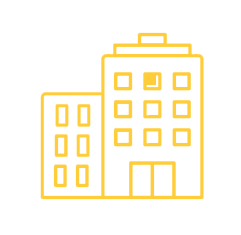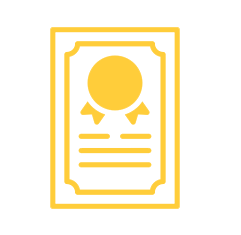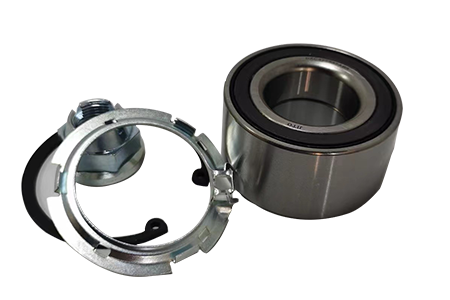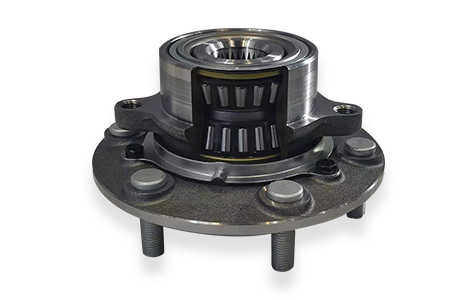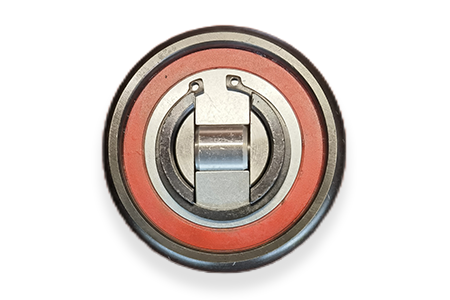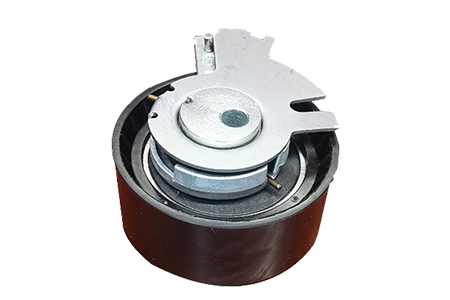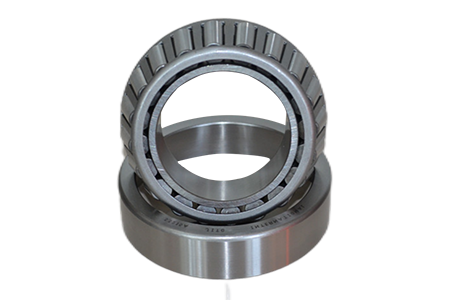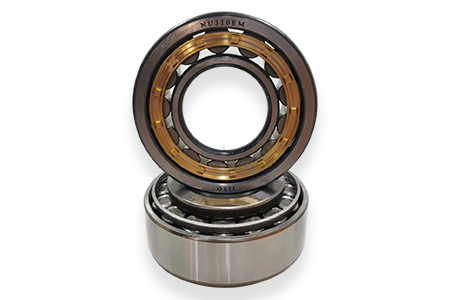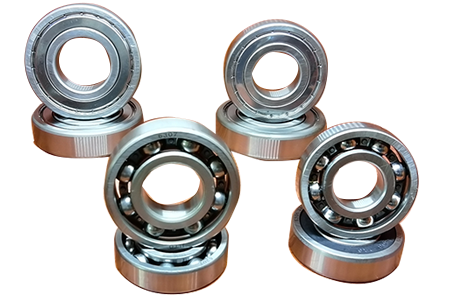Will heat treatment affect the quality of the bearings I purchase?
Yes, the thickness of the steel will affect the heating time, and bearings of the same size and thickness need to be heated together. Many outsourced heat treatment plants, in order to save time, heat steel of different thicknesses together in the same batch, which can result in uneven heating of the steel and reduce durability. However, we have our own heat treatment plant to clearly control each batch of bearings of different sizes and thicknesses, ensuring that the bearings achieve the optimal hardness and toughness.
How can I prevent bearings from rusting?
Choose bearings made of materials coated with zinc or tin. Also, wear gloves when installing bearings. If there is direct contact with the bearings by hand, remember to apply rust preventive oil after installation. If you want to completely avoid rust, you can also choose stainless steel or ceramic bearing materials.
What do the bearing clearance designations C0, C2, C3, C4, and C5 signify?
The selection of proper bearing clearance is critical as it directly impacts the function and longevity of the bearing. ISO standards have defined five clearance classes for various types of bearings, which are as follows:
- C2: Smaller than normal clearance
- C0: Normal clearance
- C3: Greater than normal clearance
- C4: Greater than C3 clearance
- C5: Greater than C4 clearance
How can bearing accuracy be distinguished?
Bearing accuracy levels are denoted as P0, P6, P5, P4, and P2, ranging from low to high precision. Here's a breakdown of these accuracy levels:
- P0: Applicable for rotational precision greater than 10 μm in bearing systems such as the speed-changing mechanism of ordinary machine tools, feed mechanism, speed-changing mechanism of automobiles, tractors, and other commonly used machinery.
- P6: Suitable for precision within 5-10 μm in bearing systems with rotational speeds of m or higher, such as the front support of an ordinary lathe using level 5 and the rear support using level 6.
- P4: Ideal for precision less than 5 μm in ultra-precision machinery with high rotational speeds, including precision coordinate boring machines, gear systems of precision grinding machines, and other precision machinery.
How to Choose a Bearing?
Bearing accuracy levels are denoted as P0, P6, P5, P4, and P2, ranging from low to high precision. Here's a breakdown of these accuracy levels:
- Understand the load requirements of bearings in your industry.
- Determine the rotational speed requirements for bearings in your industry.
- Identify the lubrication method suitable for your bearing needs.
What is the bearing load and load capacity?
Bearing load is typically defined as the reactive force exerted on the bearing by the components during use. When selecting the appropriate bearing for your application, it is crucial to first determine the bearing's load capacity.
What is rolling bearings?
Rolling bearings employ a cylindrical roller design, which, compared to ball bearings, allows for the distribution of loads over a larger surface area. They are often more suitable for heavy-load applications.
What are the types of loads on bearings?
Bearings support various load combinations, but most types of application loads can be categorized into the following four main groups:
- Radial Loads
- Axial Loads
- Preloads
- Centrifugal Loads
What is radial load in bearings?
Radial load in bearings refers to the force perpendicular to the axis of the shaft and parallel to the bearing radius.
What is axial load in bearings?
Axial load in bearings is the force acting along the axis of the shaft, sometimes referred to as thrust load. Axial loads distribute forces equally and uniformly to the rolling elements, transmitting them from the inner to the outer ring of the bearing.
How to select the right rolling bearing based on bearing load types?
- Radial loads (load perpendicular to the shaft): Choose standard cylindrical roller bearings.
- Axial loads (load parallel to the shaft): Choose cylindrical thrust bearings.
- Combined radial and axial loads: Choose tapered roller bearings.
What is bearing lubrication?
Lubrication forms a layer of oil film between the rolling elements and the bearing raceways, helping to prevent friction and overheating. Understanding the lubrication requirements of your industry is crucial for selecting the appropriate bearings, as improper lubrication is one of the most common causes of bearing failure.
What is the role of bearing lubrication?
Applying lubricants between the rolling and sliding parts of bearings helps increase speed and prolong lifespan. Other benefits of lubrication include:
- Reduction of noise and vibration
- Heat dissipation
- Sealing
- Corrosion protection
- Long-term maintenance-free operation
What are the common bearing lubrication methods?
In industrial bearings, the most common lubrication methods are:
- Oil lubricants
- Grease lubricants
How to select the right bearing lubrication methods?
| Lubricant | Grease | Oil |
| Speed suitability (n * dm) | *** Approx. 2mm | ***** Approx. 3 to 4mm |
| Service life | *** | ***** |
| Design / system costs | ***** (low) | * (higher) |
| Operating costs | ***** (low) | * (higher) |
| Heat dissipation | ** | **** |
| Running in procedure | ** | *** |
| Pollution | ***** (low) | * (higher) |
*****: very good
*: poor
What are rolling bearings and why are they important?
Rolling bearings are mechanical components designed to reduce friction between moving parts and facilitate smooth motion in machinery. Unlike sliding bearings, rolling bearings use cylindrical, needle, or tapered rollers to carry and distribute loads. This rolling action minimizes friction, heat, and wear, making rolling bearings crucial for efficient operation across various industrial applications.
What are the advantages of cylindrical roller bearings?
Cylindrical roller bearings offer outstanding performance, reliability, and longer lifespan. Theis bearing is tailored to meet the rigorous demands of heavy-duty applications, ensuring efficient machine operation and reducing downtime.
How to prevent bearing corrosion?
Bearings should not be exposed to water for extended periods, as this can lead to rust and corrosion. It can also cause premature bearing failure, affecting machine performance and productivity. Additionally, gloves should be worn when handling bearings, as sweat can also cause rust and corrosion.
Load ratings seem to vary from manufacturer to manufacturer, is there a single method that can be used to compare like styles of bearings?
Load ratings may vary between different manufacturers, but there isn't necessarily a true difference; it's just that different methods are used to calculate the load ratings. Some manufacturers use ABMA standards, some use ANSI standards, and some use equivalent dynamic load calculations. Generally, if the internal design is the same, the load ratings will be equivalent.
What is corrosion-resistant bearing?
Corrosion-resistant bearings can be used in applications where corrosive materials are present and standard bearings cannot meet the requirements, such as food processing, chemical manufacturing, pharmaceutical production, and marine applications.
What is the advantage of a thin section bearing?
Thin section bearings are bearings with reduced clearances between the inner and outer rings. Thin section ball bearings are developed specifically for applications with limited space, including those in instrumentation, robotics, medical devices, aerospace, and optical equipment.
Where are bearings found on a bike?
Bearings are commonly used in various parts of a bicycle, including:
- Front and rear wheel hubs
- Bottom bracket
- Headset, where the handlebars rotate
- Pedals
- Freewheel
How about your after-sales service and warranty?
We are committed to providing excellent after-sales service and warranty coverage. Our responsibilities regarding defective products are as follows:
- 12 months warranty from the first day of receiving goods
- Replacement: In the event of defective products, replacements will be included with your next order shipment.
- Refund: If customers request it, we offer refunds for defective products.
Do you accept ODM&OEM orders?
Yes, we offer ODM & OEM services to customers worldwide. We can customize housings in various styles and sizes across different brands. Additionally, we provide customization for circuit boards and packaging boxes according to your requirements.
What is the Minimum Order Quantity (MOQ)?
For standardized products, the MOQ is 10 pieces. However, for customized products, the MOQ should be negotiated beforehand. There is no MOQ for sample orders.
What is the lead time?
The lead time for sample orders is typically 3-5 days, while bulk orders usually take 5-15 days to fulfill.
How to place orders?
- Email Inquiry: Send us an email specifying the model, brand, and quantity of the desired products. Include consignee information, preferred shipping method, and payment terms.
- Proforma Invoice: Once we receive your inquiry, we will generate a Proforma Invoice and send it to you.
- Payment: Complete the payment process after confirming the details on the Proforma Invoice.
- Production Arrangement: Upon confirming your payment, we will proceed with production and inform you accordingly.
How about the company's production capacity?
We have more than 10 production lines, with an annual production capacity exceeding 50 million bearings.
How do you ensure the quality of your products?
Firstly, we conduct inspections after each process. Secondly, for finished products, we inspect them according to customer requirements and international standards. We have our own testing laboratory with complete testing equipment, including automatic bore measuring machines, outer diameter measuring devices, vibration meters, noise meters, hardness testers, clearance measuring instruments, cylindricity measuring instruments, etc.
Can we request samples? Are there any associated fees?
Yes, we offer complimentary samples; however, the shipping costs are the responsibility of the customer. If an order is placed after the sample has been approved, the shipping fee will either be refunded or deducted from the total order value.
How are the products packaged?
Our products are packaged using standard export-grade materials, featuring waterproof paper on the inside and an iron exterior, all securely fastened with fumigated wooden pallets. This packaging ensures optimal protection against corrosion and environmental factors during maritime shipping.


